-
 Bitcoin
Bitcoin $118,698.3676
0.16% -
 Ethereum
Ethereum $3,428.4877
5.97% -
 XRP
XRP $3.2496
9.52% -
 Tether USDt
Tether USDt $1.0002
0.00% -
 BNB
BNB $725.6930
4.36% -
 Solana
Solana $174.8923
4.52% -
 USDC
USDC $0.9997
-0.02% -
 Dogecoin
Dogecoin $0.2139
6.02% -
 TRON
TRON $0.3155
4.62% -
 Cardano
Cardano $0.8045
7.12% -
 Hyperliquid
Hyperliquid $46.6582
-1.72% -
 Stellar
Stellar $0.4676
0.80% -
 Sui
Sui $4.0143
0.38% -
 Chainlink
Chainlink $17.1546
2.97% -
 Hedera
Hedera $0.2458
3.27% -
 Bitcoin Cash
Bitcoin Cash $496.5967
-0.06% -
 Avalanche
Avalanche $22.8813
3.13% -
 Shiba Inu
Shiba Inu $0.0...01439
3.42% -
 UNUS SED LEO
UNUS SED LEO $8.8389
0.42% -
 Toncoin
Toncoin $3.2113
2.82% -
 Litecoin
Litecoin $101.2646
4.24% -
 Polkadot
Polkadot $4.2262
2.32% -
 Monero
Monero $340.4295
2.92% -
 Pepe
Pepe $0.0...01365
2.92% -
 Uniswap
Uniswap $8.9702
-2.78% -
 Bitget Token
Bitget Token $4.7675
2.00% -
 Dai
Dai $0.9998
-0.02% -
 Ethena USDe
Ethena USDe $1.0003
-0.04% -
 Aave
Aave $324.6394
-2.11% -
 Bittensor
Bittensor $433.6051
-0.88%
Trezor transaction stuck or pending
A stuck transaction in Trezor can occur due to low fees, network congestion, or mempool delays, but can often be resolved using RBF, CPFP, or manual recovery methods.
Jul 16, 2025 at 09:21 am
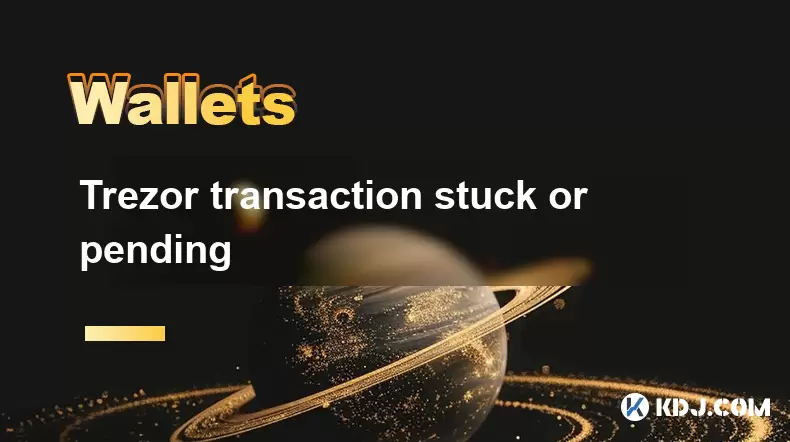
Understanding Stuck or Pending Transactions in Trezor Wallets
When using a Trezor hardware wallet, users may occasionally encounter transactions that remain stuck or pending for an extended period. This situation can be frustrating and confusing, especially for those unfamiliar with blockchain mechanics. A transaction becomes stuck when it is broadcasted to the network but does not get confirmed by miners within a reasonable timeframe.
One of the most common reasons behind this issue is low transaction fees. On blockchains like Bitcoin or Ethereum, miners prioritize transactions with higher fees per byte. If a user sends a transaction with insufficient fees during a busy network period, it may languish in the mempool (a pool of unconfirmed transactions) indefinitely.
How to Check if Your Transaction Is Truly Stuck
Before taking any corrective action, it's essential to verify whether your transaction is genuinely stuck or just delayed. To do this:
- Visit a blockchain explorer such as blockchair.com or blockstream.info.
- Enter your transaction ID (TXID) into the search bar.
- Look at the number of confirmations. If it remains at zero after several hours or even days, it’s likely stuck.
In some cases, the transaction might still be propagating across nodes, so waiting a bit longer could resolve the issue automatically. However, if the status doesn’t change, further intervention is necessary.
Steps to Resolve a Stuck Transaction Using Trezor Suite
If you're using Trezor Suite, follow these steps to attempt recovery from a stuck transaction:
- Open Trezor Suite and connect your device.
- Navigate to the relevant cryptocurrency account where the transaction was sent.
- Locate the pending transaction under the "History" tab.
- Click on the transaction to view more details.
- Look for options like "Cancel" or "Accelerate" depending on the coin type and network support.
For Bitcoin-based transactions, you may have the option to use Replace-by-Fee (RBF) or Child-Pays-for-Parent (CPFP) mechanisms to either replace the transaction with a higher fee or send a new transaction that pays a high fee to incentivize confirmation of both itself and its parent.
Recovering Funds When RBF Isn't Supported
Not all cryptocurrencies support Replace-by-Fee functionality. In such cases, you must take manual steps to recover your funds:
- Ensure your wallet software is up-to-date; newer versions sometimes include better tools for handling stuck transactions.
- Export your private key or xprv carefully through Trezor settings while ensuring physical security of your device.
- Import the private key into another wallet that supports custom fee settings or has built-in tools for dealing with unconfirmed transactions.
- Resend the same amount from that external wallet with a higher transaction fee, effectively replacing the original one once mined.
Always exercise caution when moving private keys around—ensure you are using trusted devices and never expose them online unnecessarily.
Preventive Measures Against Future Stuck Transactions
To avoid encountering similar issues in the future, consider implementing preventive strategies:
- Always review and adjust transaction fees manually before sending, particularly during peak times.
- Enable features like optimal fee calculation available within Trezor Suite which dynamically adjusts fees based on current network congestion levels.
- Familiarize yourself with basic concepts about how blockchain confirmations work so you understand what constitutes normal behavior versus anomalies requiring attention.
By staying informed and proactive about transaction management practices, users can significantly reduce their chances of experiencing stuck transactions again.
Frequently Asked Questions
Q: Can I lose money due to a stuck transaction?
A: No, your funds aren't lost—they remain tied up until the transaction either gets confirmed or fails. However, they won't appear as spendable until resolved.
Q: Does disconnecting my Trezor device help resolve a stuck transaction?
A: Disconnecting doesn't affect the state of the transaction already broadcasted onto the network. It only stops ongoing interactions between the wallet interface and the device.
Q: Are there specific coins more prone to having stuck transactions than others?
A: Yes, coins operating on congested networks without dynamic fee adjustment systems tend to experience more frequent instances of unconfirmed transactions compared to those optimized for scalability and efficiency.
Q: Is there a way to track multiple stuck transactions simultaneously?
A: Most blockchain explorers allow checking individual TXIDs separately. Some advanced wallets offer batch processing features enabling monitoring of several pending activities concurrently though capabilities vary widely among platforms.
Disclaimer:info@kdj.com
The information provided is not trading advice. kdj.com does not assume any responsibility for any investments made based on the information provided in this article. Cryptocurrencies are highly volatile and it is highly recommended that you invest with caution after thorough research!
If you believe that the content used on this website infringes your copyright, please contact us immediately (info@kdj.com) and we will delete it promptly.
- Silver Breaks 14-Year High: What's Driving the Rally?
- 2025-07-17 22:50:13
- Grok AI, Meme Coins, and Dogecoin: What's the Hype in 2025?
- 2025-07-17 23:10:11
- C2 Blockchain, DOG Coins, and Acquisition: A Meme-Native Bitcoin Asset
- 2025-07-17 20:30:12
- DeFi Evolution: Hyperion, HYPE Token, and the Hyperliquid Ecosystem
- 2025-07-17 21:30:12
- BlockDAG's NO VESTING PASS: A Crypto Game Changer Amid CRO & ONDO Swings
- 2025-07-17 21:30:12
- Ethereum, Pepe, Crypto: Navigating the Wild West of Digital Assets
- 2025-07-17 20:30:12
Related knowledge

How to find my 12 word phrase on Coinbase Wallet
Jul 17,2025 at 10:43pm
Understanding the 12 Word Phrase in Coinbase WalletThe 12-word phrase, also known as a recovery phrase or seed phrase, is a critical component of cryp...
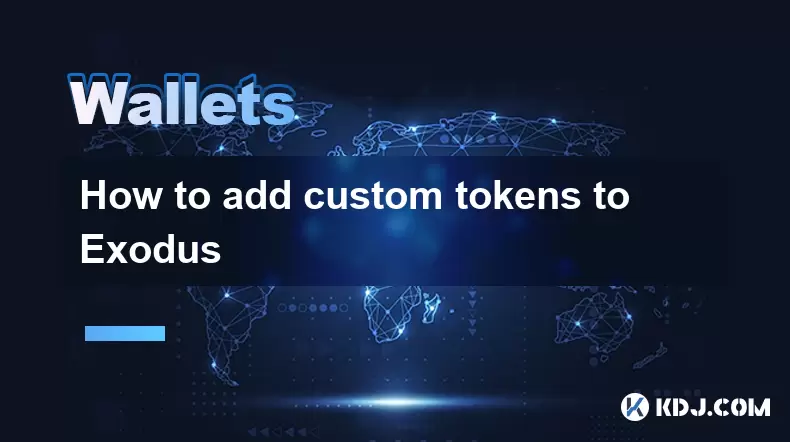
How to add custom tokens to Exodus
Jul 17,2025 at 08:57pm
Understanding Custom Tokens in ExodusExodus is a multi-asset wallet that supports a wide range of cryptocurrencies out of the box. However, there are ...
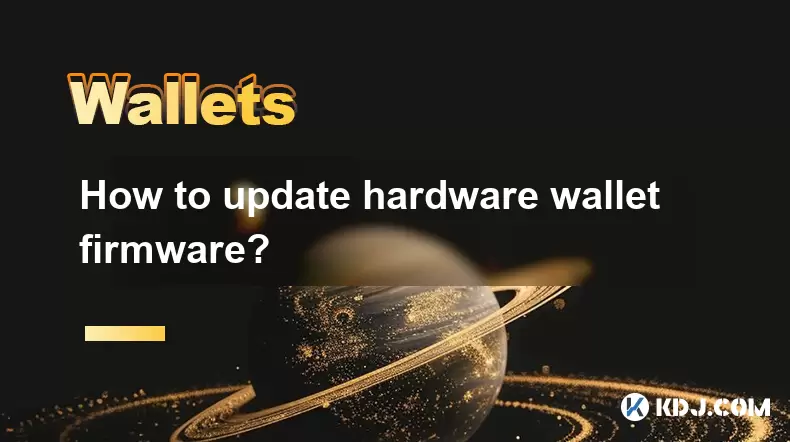
How to update hardware wallet firmware?
Jul 17,2025 at 11:00pm
Understanding Hardware Wallet FirmwareA hardware wallet is a physical device used to securely store cryptocurrencies offline. These wallets come with ...
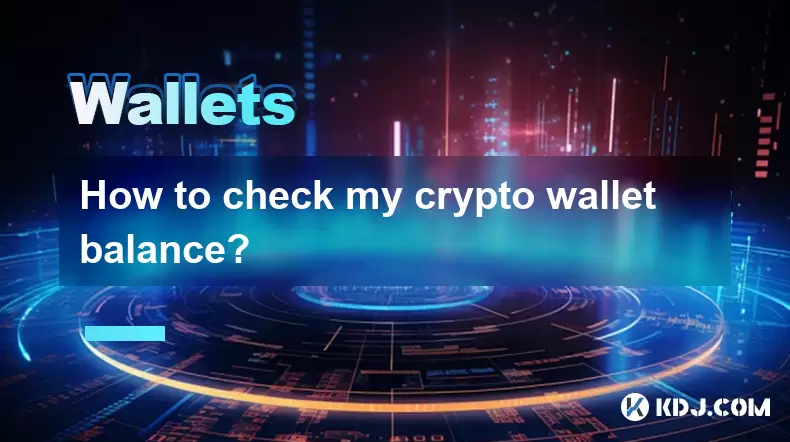
How to check my crypto wallet balance?
Jul 17,2025 at 06:28pm
Understanding Your Crypto Wallet BalanceWhen you hold cryptocurrencies, your wallet balance is a representation of the digital assets available for tr...
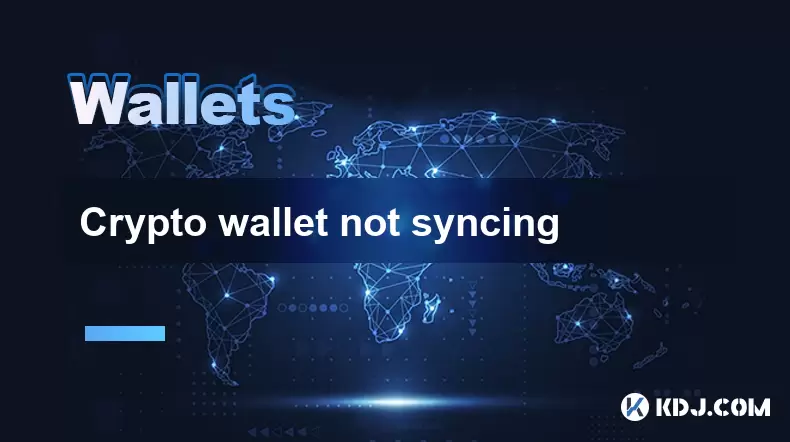
Crypto wallet not syncing
Jul 17,2025 at 09:42pm
Understanding the Basics of Crypto Wallet SyncingA crypto wallet not syncing issue is a common problem faced by many users in the blockchain space. Wh...
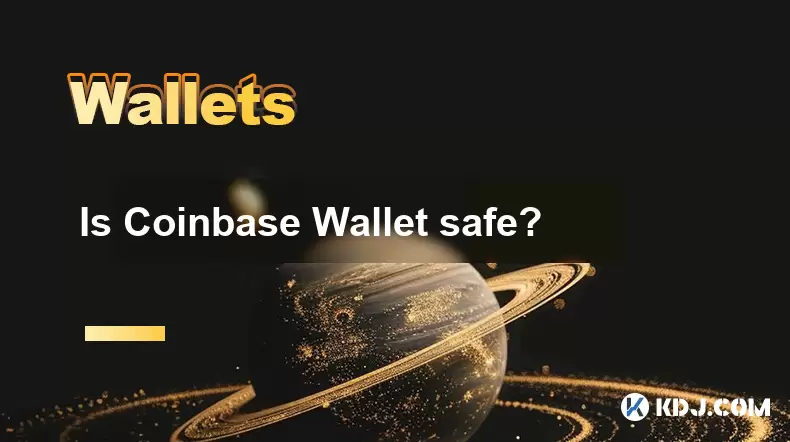
Is Coinbase Wallet safe?
Jul 17,2025 at 08:42pm
Understanding Coinbase Wallet: What It Is and How It WorksCoinbase Wallet is a digital wallet developed by Coinbase, one of the largest cryptocurrency...

How to find my 12 word phrase on Coinbase Wallet
Jul 17,2025 at 10:43pm
Understanding the 12 Word Phrase in Coinbase WalletThe 12-word phrase, also known as a recovery phrase or seed phrase, is a critical component of cryp...

How to add custom tokens to Exodus
Jul 17,2025 at 08:57pm
Understanding Custom Tokens in ExodusExodus is a multi-asset wallet that supports a wide range of cryptocurrencies out of the box. However, there are ...

How to update hardware wallet firmware?
Jul 17,2025 at 11:00pm
Understanding Hardware Wallet FirmwareA hardware wallet is a physical device used to securely store cryptocurrencies offline. These wallets come with ...

How to check my crypto wallet balance?
Jul 17,2025 at 06:28pm
Understanding Your Crypto Wallet BalanceWhen you hold cryptocurrencies, your wallet balance is a representation of the digital assets available for tr...

Crypto wallet not syncing
Jul 17,2025 at 09:42pm
Understanding the Basics of Crypto Wallet SyncingA crypto wallet not syncing issue is a common problem faced by many users in the blockchain space. Wh...

Is Coinbase Wallet safe?
Jul 17,2025 at 08:42pm
Understanding Coinbase Wallet: What It Is and How It WorksCoinbase Wallet is a digital wallet developed by Coinbase, one of the largest cryptocurrency...
See all articles

























































































